Sports Bar in Summerville, SC

We'd like to welcome you the coolest coop in Summerville: The Kickin' Chicken. Life in the Lowcountry is all about laid-back vibes and fun times, and we serve up those same experiences alongside our famous coop favorites seven days a week.
Whether you're gathering friends and family for game day or want a fresh, fast dinner for the two of you, we've got something to meet everyone's needs. Summerville residents love to eat at our restaurants because we know what they like to eat, drink, and play. No, we didn't conduct surveys and focus groups to get that conclusion - owners Chip Roberts and Bobby Perry grew up right here in Charleston. Like many Chucktown natives, they attended the University of South Carolina before finding their path in life.
After graduating college, Chip and Bobby saw a chance to add to the delicious food culture in Charleston. In 1997, Bobby and Chip partnered up to start Charleston's favorite bar and grill: The Kickin' Chicken. If you've ever visited our restaurant, you know it was never meant to be a fancy, sit-down eatery. Instead, Chip and Bobby envisioned serving fresh, delicious food to their fellow Charlestonians in a fun and enjoyable atmosphere.
After opening their first location in Charleston, Bobby and Chip knew they had something special on their hands. After building a loyal fanbase and experimenting with the recipe for its now-famous Kickin' Chicken sandwich, it was time to expand.
To help facilitate that expansion, David Miller came onboard after they opened a second location. Finally, with the guidance and knowledge that David brought, the Kickin' Chicken had become a staple in South Carolina and an incredibly popular sports bar in Summerville, SC.
Today, we're still cooking up fresh, tasty meals and great times at all our locations around metro Summerville. We're proud to be Lowcountry natives and strive for excellence with every plate and drink we deliver to your table or front door.
Our hours
| Day | Hour |
|---|---|
| Sunday - Thursday | 11 am -10 pm |
| Friday - Saturday | 11 am - 11 pm |
Welcome to Your New Favorite Bar and Grill in Summerville, SC
Our sports bar wouldn't be what it is without a menu full of coop favorites, signature sandwiches, and cold beverages. Here are just a few of our customer's go-to dishes and drinks to enjoy at Kickin' Chicken:
Starters
They say first impressions make a world of difference. Our starters are sure to whet your appetite and show your stomach how serious we are about making it happy.

Bobby Fries
"I'll just eat half of those Bobby Fries now, and I'll save the rest for later," is a phrase that nobody says. Why? Because our Bobby Fries are basically heaven on earth, and it's almost impossible to put them down. We start with sizzling, fresh fries hot out of the fryer and top them with creamy ranch dressing, crispy bacon bits, and a blanket of melted cheeses. We then serve them straight to your table or house, so you can dig in even if you're not dining out.

Fried Pickles
Lightly breaded and fried to golden-brown perfection, our fried pickles are equal parts tangy and tasty. With a cup of cool ranch served on the side, it's hard to quit dipping these crispy pickle chips. Order up a batch or two to enjoy with friends on college gameday or as a precursor to your memorable meal at Kickin' Chicken.

Kickin' Nachos
Get ready for one of the biggest, best plates of nachos that you've ever seen in a Summerville sports bar. We start with a heaping helping of crispy, crunchy tortilla chips and top them with our indulgent house queso. We then add melty mixed cheese, crisp lettuce, cool tomato, onion to the mix, so you can say you ate your veggies. We top it all off with zesty jalapenos for a little extra kick.
Chicken, Rubs, & Sauces
Our chicken dishes helped put us on the map, so be sure you try one or all of our fresh-made choices of fried poultry perfection.

Wings
Whether you're "winging" in the weekend or need football-day food for your whole crew at the bar, our famous chicken wings are a crowd favorite at Kickin' Chicken. Hot and crispy on the outside and tender and juicy inside, you can't go wrong with fried chicken wings, especially when friends are near and sports is on the TV. Sauce up your wings with flavors like buffalo, Nashville hot, hot honey garlic, Polynesian, or pterodactyl. Or, if you prefer, let us rub your meat with lemon pepper, ranch, spicy ranch, or Jamaican jerk. The choice is yours, and none of them are wrong.

Kickin' Nuggets
A world without great chicken nuggets is a world we don't want to live in. That's why we made our own! Our fresh-cut, hand-breaded, all-white meat nuggets are served with fries and your choice of honey mustard or ranch for dipping.

Kickin' Tenders
Our marinated chicken tenders are big, juicy, and hand-breaded in our unique blend of spices. You won't find these plump tenders at any fast-food drive-thru! Before we deliver your Kickin' Tenders, we load up your plate with crispy fries and add a cup of honey mustard for dipping. Concerned about your cardio? Order your tenders grilled instead of fried!
Signature Wraps & Sandwiches
Our Kickin' Chicken wraps and sandwiches are handheld masterpieces that will leave your tummy full of joy.

The Kickin' Chicken
This sandwich is the one that started it all! We pile tender, juicy chicken and crispy bacon into a soft sandwich roll and cover it with a melty blanket of provolone cheese. With a side of our extra-special sauce for dipping, this is chicken sandwich nirvana that you can only find at our bar and grill in Summerville, SC.

The Johnny
Want to take your Kickin' Chicken to the next level? Our The Johnny takes all the best things about our original version and adds that spicy tang that you're craving. This fan-favorite comes with your choice of french fries, pasta salad, coleslaw, or potato chips, complete with ranch or bleu cheese for dipping.

Boss Burger
Cheddar cheese, onion straws, lettuce, tomato, smoky BBQ aioli.
Coop Favorites
Like the famous Kickin' Chicken sandwich, our Coop Favorites are uniquely us and full of Lowcountry love and flair.

Kickin' Quesadilla
In "queso" you didn't know, you can sponsor your good mood with our take on this classic bar food staple! We take your pick of chicken, shrimp, or veggies, add mixed cheese, onions, and peppers, and grill it to perfection. We then deliver it to your door or table with fresh salsa and yummy sour cream to complete this masterpiece.

Chicken & Waffles
Crispy fried chicken. Pillowy-soft Belgian waffles. A side of salty bacon and sweet syrup. Breakfast for dinner never sounded so great!
Salads
Our salads are tasty, lean, and green to help your body keep running like a machine. With unique salad dressings and awesome add-ons, your new favorite dish might just be doctor recommended.

The Southwest Salad
Our house salad topped with black bean & corn mix, and tortilla crisps. Served with our creamy cilantro lime. Add Chicken $5, Shrimp $6, Veggie Burger $5.

The Kickin' Chicken Salad
A refreshing salad topped with your choice of fried or grilled chicken, this salad is far from rabbit food, and will leave you feeling full without having to unbutton your pants.
Latest News Near Me Summerville, SC
High school football: Final scores from this week’s SC playoff games
Lou Bezjakhttps://www.thestate.com/sports/high-school/article312902410.html
It is Week 2 of the SCHSL and SCISA high school football playoffs.SCHSL Class 5A Division IUpper StateDutch Fork 42, Boiling Springs 7Byrnes 37, Rock Hill 21Dorman 44, Blythewood 13Ridge View 29, Spartanburg 21Lower StateCarolina Forest 49, Fort Dorchester 0Summerville 48, Ashley Ridge 27James Island 42, Sumter 35Stratford 40, River Bluff 35Nov. 21Upper State(4) Byrnes at (1) Dutch Fork(3) Ridge View at (2) D...
It is Week 2 of the SCHSL and SCISA high school football playoffs.
SCHSL Class 5A Division I
Upper State
Dutch Fork 42, Boiling Springs 7
Byrnes 37, Rock Hill 21
Dorman 44, Blythewood 13
Ridge View 29, Spartanburg 21
Lower State
Carolina Forest 49, Fort Dorchester 0
Summerville 48, Ashley Ridge 27
James Island 42, Sumter 35
Stratford 40, River Bluff 35
Nov. 21
Upper State
(4) Byrnes at (1) Dutch Fork
(3) Ridge View at (2) Dorman
Lower State
(5) Summerville at (1) Carolina Forest
(6) James Island at (2) Stratford
SCHSL Class 5A Division II
Upper State
Northwestern 42, Catawba Ridge 7
Gaffney 38, Greenwood 31
Indian Land 40, Hillcrest 10
TL Hanna 38, Greenville 14
Lower State
Irmo 41, Lugoff-Elgin 16
White Knoll 14, Lucy Beckham 10
Myrtle Beach 24, West Florence 21
Berkeley 48, Westwood 20
Nov. 21
Upper State
(5) Gaffney at (1) Northwestern
(3) Indian Land at (2) TL Hanna
Lower State
(4) White Knoll at (1) Irmo
(3) Berkeley at (2) Myrtle Beach
SCHSL Class 4A
Upper State
South Pointe 49, Fountain Inn 0
AC Flora 34, Seneca 21
Westside 55, Wren 20
Camden 52, Daniel 14
Lower State
South Florence 43, Bishop England 0
North Augusta 35, Gilbert 7
Gray Collegiate 49, Hartsville 28
Hilton Head 31, Wilson 7
Nov. 21
Upper State
(5) AC Flora at (1) South Pointe
(7) Camden at (3) Westside
Lower State
(4) North Augusta at (1) South Florence
(3) Gray Collegiate at (2) Hilton Head Island
SCHSL Class 3A
Upper State
Powdersville 30, Pendleton 7
Mountain View Prep 50, Crescent 49
Belton-Honea Path 52, Southside Christian 6
Woodruff 40, Christ Church 37
Lower State
Oceanside Collegiate 24, Marlboro County 7
Dillon 42, Silver Bluff 7
Loris 56, Orangeburg-Wilkinson 20
Newberry 41, Hanahan 21
Nov. 21
Upper State
(5) Mountain View Prep at (1) Powdersville
(3) Belton-Honea Path at (2) Woodruff
Lower State
(4) Dillon at (1) Oceanside Collegiate
(3) Loris at (2) Newberry
SCHSL Class 2A
Upper State
Clinton 35, Saluda 26
Fairfield Central 36, Andrew Jackson 0
Chester 42, Batesburg-Leesville 28
Strom Thurmond 48, Liberty 21
Lower State
Hampton County 28, Cheraw 10
Manning 46, Timberland 24
Central 49, East Clarendon 28
Philip Simmons 17, Atlantic Collegiate 7
Nov. 21
Upper State
Fairfield Central at Clinton
Chester at Strom Thurmond
Lower State
Hampton County vs. Manning
Central at Philip Simmons
SCHSL Class A
Upper State
Lewisville 29, Abbeville 28
CA Johnson 28, Blackville-Hilda 0
Hunter-Kinard-Tyler 36, Ware Shoals 12
Lamar 36, Wagener-Salley 6
Lower State
Cross 38, Bethune Bowman 0
Johnsonville 38, Scott’s Branch 14
Carvers Bay 56, Lake View 8
Bamberg-Ehrhardt 49, Latta 6
Nov. 21
Upper State
CA Johnson at Lewisville
Hunter-Kinard Tyler at Lamar
Lower State
Johnsonville at Cross
Carvers Bay at Bamberg-Ehrhardt
SCISA Class 4A
Northwood 34, Porter-Gaud 20
Heathwood 16, Hammond 13
SCISA Class 3A
Wilson Hall 50, Hilton Head Christian 29
Pinewood Prep 45, Florence Christian 6
SCISA Class 2A
Pee Dee Academy 34, Hilton Head Prep 33
Bethesda 32, Greenwood Christian 14
SCISA Class A
Colleton Prep 22, Dorchester Academy 16
Williamsburg Academy 37, Thomas Heyward 20
SCISA 8-Man
WW King 74, Jefferson Davis 28
Laurens Academy 30, Holly Hill 24
SCISA Championships
Nov. 21
At Calhoun Academy
8-Man: WW King vs. Laurens Academy, 7:30 p.m.
At South Carolina State
Nov. 21
Class 4A: Heathwood Hall vs. Northwood, 7 p.m.
Nov. 22
Class 2A: Pee Dee Academy vs. Bethesda, noon
Class A: Colleton Prep vs. Williamsburg Academy, 3:30 p.m.
Class 3A: Wilson Hall vs. Pinewood Prep, 7:30 p.m.
Ellavoz Impact Capital Acquires Residential Units in Summerville, South Carolina
Business Wirehttps://aijourn.com/ellavoz-impact-capital-acquires-residential-units-in-summerville-south-carolina/
BELMAR, N.J.–(BUSINESS WIRE)–A partnership between Ellavoz Impact Capital, Tesatura Capital, EQ Housing Advisors, and Reinvestment Fund has helped preserve 56 units of naturally occurring affordable housing (NOAH) in the rapidly appreciating housing market of Summerville, SC, a suburb and employment hub in the Charleston area.For Jeffrey Crum, president of Ellavoz Impact Capital, and Allie Zamfir, founder of Tesatura Capital, impact investing means far more than just financial returns. It’s about aligning capital to ...
BELMAR, N.J.–(BUSINESS WIRE)–A partnership between Ellavoz Impact Capital, Tesatura Capital, EQ Housing Advisors, and Reinvestment Fund has helped preserve 56 units of naturally occurring affordable housing (NOAH) in the rapidly appreciating housing market of Summerville, SC, a suburb and employment hub in the Charleston area.
For Jeffrey Crum, president of Ellavoz Impact Capital, and Allie Zamfir, founder of Tesatura Capital, impact investing means far more than just financial returns. It’s about aligning capital to preserve housing for existing residents who would likely be displaced by an alternatively motivated buyer.
Mr. Crum spoke about the impact these acquisitions will have on the local community and current residents: “Purchasing these three small apartment buildings which are all within a tenth of a mile of each other helps Summerville preserve much needed price-attainable housing. While this area has exploded in terms of job growth and opportunity, this has led to rapid increases in real estate values and rent prices. Ellavoz is excited to partner with Tesatura and Reinvestment Fund to ensure these 56 units remain affordable to low- and moderate-income households that might otherwise be forced to move or see their rents increase drastically.”
With more than 40 years of experience directing capital into underserved communities, Reinvestment Fund is bringing both funding and expertise to the project. Their experience was central during the acquisition of the three townhome communities: Canopy at Pine Landing, Canopy at Cypress Square, and Canopy at Oak Bend.
Located near the planned Lowcountry Rapid Transit line and major employers such as Volvo and Walmart, the properties provide affordable homes in a fast-developing corridor where rising rents threaten long-time residents. NOAH properties are older, unsubsidized apartments which are classified as affordable due to age or condition and are increasingly vulnerable to market-rate conversion.
Through this investment, affordability is preserved via a covenant that reserves a portion of units for households earning between 50% and 80% of Area Median Income (AMI). Residents will experience more than just sustained affordability. Both communities will receive thoughtful renovations and essential building system upgrades, along with new community features such as a playground, gardens, and improved laundry facilities. Together, these enhancements will elevate the daily living experience for more than 100 residents—many of whom are working families and seniors.
This investment marks a major milestone for Reinvestment Fund who has lent billions in capital for affordable housing and community development projects throughout the country. This investment represents Reinvestment Fund’s first limited partner equity investment in decades. Ellavoz and Tesatura applaud Reinvestment Fund’s ability to find creative and unique ways to deploy capital into affordable housing transactions that meet the demands of the field today.
“We’re charting the path and creating new models for what community-centered investment can look like here in Charleston,” said Allie Zamfir, Founder of Tesatura Capital. “That means collaborating with partners like Reinvestment Fund to design tools that are both financially resilient and socially impactful.”
As housing pressures grow nationwide, this collaboration offers a model for safeguarding affordability without reliance on public subsidy. Ultimately, Canopy at Pine Landing, Canopy at Cypress Square, and Canopy at Oak Bend embody more than preserved housing—they illustrate how mission-driven capital can protect homes and strengthen communities for generations to come.
About Ellavoz Impact Capital:
Ellavoz Impact Capital, LLC, (EIC) is a social impact investor, advisor, asset manager, and real estate developer focused on creating and preserving workforce and affordable housing and other community-oriented real estate properties. EIC’s strategy concentrates investments into price-attainable housing and economic development projects by working with socially aligned operators, local nonprofits, and governmental agencies to deliver positive community outcomes and double bottom line returns.
Based in Belmar and Newark, New Jersey, EIC currently has total managed and controlled assets with a value exceeding $300 million. EIC is comprised of certified public accountants, attorneys, as well as real estate, finance, and economic development professionals. The team has both private sector experience and decades-long experience leading large community development financial institutions and nonprofit organizations. Collectively, the management team has led transactions with a total capitalization value of nearly $3 billion.
For more information about Ellavoz Impact Capital, visit our website at Ellavoz.com.
About Tesatura Capital:
Founded in 2023, Tesatura Capital is an emerging investment management firm focused on creating and preserving high-quality workforce and affordable housing in South Carolina with an initial focus on infill missing middle essential housing in Charleston. Tesatura executes on this mission by directly investing in and operating multifamily properties via partnerships with mission-aligned investors and non-profits. The firm believes that by focusing on community needs, both at the property and neighborhood level, they can help families and individuals live vibrant lives. Managing Principal Allie Zamfir brings deep institutional investment and asset management experience both in impact investing and managing a large portfolio of multifamily assets throughout the region.
To learn more about Tesatura Capital, visit tesaturacap.com.
About Reinvestment Fund:
Reinvestment Fund is a mission-driven financial institution committed to making communities work for all people. We bring financial and analytical tools to partnerships that work to ensure that people in communities across the country have the opportunities they strive for: affordable places to live, access to nutritious food and health care, schools where their children can flourish, and strong, local businesses that support jobs. We use data to understand markets and how transactions can have the most powerful impact, which has consistently earned us the top Aeris rating of AAA for financial strength and four stars for impact management. Our asset and risk management systems have also earned us an AA-rating from S&P. Since our inception in 1985, Reinvestment Fund has provided over $3.2 billion in financing to strengthen neighborhoods, scale social enterprises, and build resilient communities.
Learn more at reinvestment.com.
Contacts
Chris Ferry at [email protected] or call direct at 732.616.8847.
How Real Estate Experts Jana Bantz and Lisa Maynor of Summerville, SC Explain How to Navigate the Real Estate Market in Today’s Economy for HelloNation
HelloNationhttps://finance.yahoo.com/news/real-estate-experts-jana-bantz-065400627.html
This is a paid press release. Contact the press release distributor directly with any inquiries.SUMMERVILLE, S.C., Nov. 03, 2025 (GLOBE NEWSWIRE) -- What should home buyers and home sellers focus on in today’s changing housing market? According to , understanding how local market factors differ from national trends is essential for anyone navigating the Summerville real estate landscape.In Summerville, home prices have held steady even as the pace of sales has cooled from the rapid growth of previous years. The Charleston...
This is a paid press release. Contact the press release distributor directly with any inquiries.
SUMMERVILLE, S.C., Nov. 03, 2025 (GLOBE NEWSWIRE) -- What should home buyers and home sellers focus on in today’s changing housing market? According to , understanding how local market factors differ from national trends is essential for anyone navigating the Summerville real estate landscape.
In Summerville, home prices have held steady even as the pace of sales has cooled from the rapid growth of previous years. The Charleston housing market, which includes Summerville, continues to attract steady demand from both local families and newcomers. Rather than a downturn, experts describe today’s conditions as a healthy rebalancing. The number of homes for sale is lower, but the buyers who remain are serious and selective, rewarding preparation and realistic pricing.
The article explains that higher interest rates, influenced by Federal Reserve policies, remain a key challenge for home buyers. These higher borrowing costs have reduced purchasing power, making it harder for some to afford the same level of home as before. Yet, the slowdown in competition means fewer multiple offers, allowing buyers to take more time with each decision. This shift gives them the ability to schedule a home inspection, carefully explore mortgage options, and compare properties without rushing into a purchase price they might later regret.
For Realtors Jana Bantz and Lisa Maynor of Jana Bantz & Associates, success in Summerville real estate depends on clarity and preparation. They emphasize that local factors often differ from national headlines. The Charleston housing market continues to benefit from strong job growth, quality schools, and a lifestyle that consistently draws new residents. These fundamentals help stabilize home prices even as the pace of transactions adjusts. According to their insights, buyers and sellers who understand local real estate trends can make better, more confident decisions.
For home sellers, careful preparation is more valuable than ever. The HelloNation article highlights how small steps, such as improving curb appeal, making minor updates, and staging, can significantly influence the final home sale. Pricing, however, remains the most critical factor. An overpriced home may sit on the market for weeks, while one priced near its median sale price often attracts serious, qualified interest. Cash offers are less common today, but prequalified buyers remain active, and flexible negotiation terms—such as adjusted closing costs or move-in dates—can help complete deals smoothly.
Ashley Ridge finishes season strong
Roger Leehttps://www.postandcourier.com/journal-scene/sports/prep_sports/ashley-ridge-finishes-season-strong/article_65c4bfb9-1c84-4dd7-bc78-3589c6792d2a.html
The Ashley Ridge swim teams had a strong performance during the 2025 South Carolina 5A Division I Swimming Championships in Columbia.The Ashley Ridge boys came closer than they ever have to capturing a state championship, placing second. JL Mann won the boys’ meet with 423 points. Ashley Ridge claimed runner-up honors with 336 points. Rounding out the Top 3 were Wando (334.5), West Ashley (292) and Mauldin (236). Fort Dorchester (70) placed 15th and Summerville (69) placed 16th.JL Mann also won the girls’ meet with ...
The Ashley Ridge swim teams had a strong performance during the 2025 South Carolina 5A Division I Swimming Championships in Columbia.
The Ashley Ridge boys came closer than they ever have to capturing a state championship, placing second. JL Mann won the boys’ meet with 423 points. Ashley Ridge claimed runner-up honors with 336 points. Rounding out the Top 3 were Wando (334.5), West Ashley (292) and Mauldin (236). Fort Dorchester (70) placed 15th and Summerville (69) placed 16th.
JL Mann also won the girls’ meet with a 286-point total. Clover (269), Mauldin (268), Wade Hampton (250) and River Bluff (232) rounded out the Top 5 girls’ teams. Cane Bay (183) placed seventh, while Ashley Ridge (183) placed 10th, Fort Dorchester (35) placed 18th and Summerville (34) placed 19th.
“We have a great group of kids, and watching them compete and cheer each other on was really cool,” said Ashley Ridge coach Victoria Merritt. “There’s something special about teaching kids their first swim lessons or watching them grow up from an 8-year-old on a summer swim team and then having them on the varsity team and seeing every bit of their hard work pay off.”
Ashley Ridge senior Grace Marsaa broke a state record that had stood since 2016, winning the Girls 100-yard Breaststroke with a 1:02.82 time. She also won the Girls' 50 Freestyle with a time of 24.32 and helped two AR relay teams to a top-10 finish.
Several members of the AR boys’ team contributed to multiple Top 10 finishes.
The Cane Bay Girls 200 Free Relay team of Mia Stephen, Josie Mullen, Fiona Haefner, Madeline Degeorge won its event with a 1:40.87 time.
Ashley Ridge dominated the Region 8 Swim Championships Oct. 3 at the North Charleston Aquatic Center, claiming both the boys’ and girls’ region championships.
The teams also had a lot of success before the region meet. The boys won the Ripley's Invitational and the Rock the Block Invitational. The girls placed second during both events.
Nathan Lindsey broke the school record in the boys 200-yard freestyle. Karter Gladis broke the school records in the boys 100 butterfly and boys 100 breaststroke. Marsaa broke the school records in the girls 200 free, girls 100 butterfly and girls 100 breaststroke.
“It was a really great season of fast swimming and a true testament to the dedication of the AR swimmers,” Merritt said. “They represented their families, the school and the sport so well. This marks the eighth straight time our boys and girls have won the region.”
5A Division 1 Swimming Championships Top 10 Finishes
AR Boys 200 Medley Relay (Nathan Lindsey, Karter Gladis, Landon Berghoff, Jimmy Young), 4th
Samuel Menken- Boys 50 Freestyle, 10th
Karter Gladis- Boys 100 Butterfly, 4th/ Boys 100 Breaststroke, 2nd
Ricardo DeCastro, Boys 100 Fly, 7th
Nathan Lindsey- Boys 500 Free, 2nd/ Boys 200 Free, 4th/ Boys 500 Free, 2nd
Finn Routhier- Boys 100 Backstroke, 5th
Angus Harley- Boys 100 Back, 7th
Landen Piscitelli- Boys 100 Breaststroke, 9th
Jimmy Young- Boys 50 Free, 8th/ Boys 100 Free, 8th
Landon Berghoff- Boys 500 Free, 6th
AR Boys 200 Free Relay (Livy Williams, Landen Piscitelli, Finn Routhier, Sean Grillet), 8th
FD Boys 200 Free Relay (Artem Sokolov, Samuel, Lucas Thibault, Leif Bergmann), 9th
AR Boys 400 Free Relay (Nathan Lindsey, Landon Berghoff, Jimmy Young, Karter Gladis), 2nd
CB Girls 200 Medley Relay (Fiona Haefner, Mia Stephen, Madeline Degeorge, Josie Mullen), 2nd
AR Girls 200 Medley Relay (Addie Green, Grace Marsaa, Callie Casa, Emily Bonacci), 4th
Madeline Degeorge- Girls 100 Fly, 3rd
Emily Bonacci- Girls 500 Free, 4th/ Girls 200 Free, 7th
CB Girls 200 Free Relay (Mia Stephen, Josie Mullen, Fiona Haefner, Madeline Degeorge), 1st
Fiona Haefner- Girls 100 Back, 4th
Grace Marsaa- Girls 50 Free, 1st/ Girls 100 Breast, 1st/
Bayleigh Simmons- Girls 50 Free, 7th
AR Girls 200 Free Relay (Kail Walker, Harper Kabealo, Grace Marsaa, Emily Bonacci), 8th
CB Girls 400 Free Relay (Mia Stephen, Josie Mullen, Fiona Haefner, Madeline Degeorge), 5th
2025 5A Region 8 Swim Champions
AR Girls 200 Medley Relay (Addie Green, Grace Marsaa, Callie Casa, Emily Bonacci)
Emily Bonacci- Girls 200 Free/ Girls 100 Free
Landon Berghoff- Boys 200 Free/ Boys 500 Free
Nathan Lindsey- Boys 200 IM
Grace Marsaa- Girls 100 Fly/ Girls 100 Breast
Addie Green- Girls 100 Back
Karter Gladis- Boys 100 Breast
AR Girls 400 Free Relay (Grace Sapko, Callie Casa, Kail Walker, Addie Green)
AR Boys 400 Free Relay (Nathan Lindsey, Landon Berghoff, Finn Routhier, Karter Gladis)
West Ashley Boys 200 Medley Relay (Daniyal Eldridge, Sean Groeber, Gabe Smith, Reid Scott)
Ashlyn Cook- Girls 200 IM
Russell Perlmutter- Girls 50 Free
Gabe Smith- Boys 50 Free/ Boys 100 Free
Daniyal Eldridge- Boys 100 Fly/ Boys 100 Back
Sophia Evans- Girls 500 Free
West Ashley Boys 200 Free Relay (Daniyal Eldridge, Sean Groeber, Gabe Smith, Brennan Kofke)
Disclaimer:


